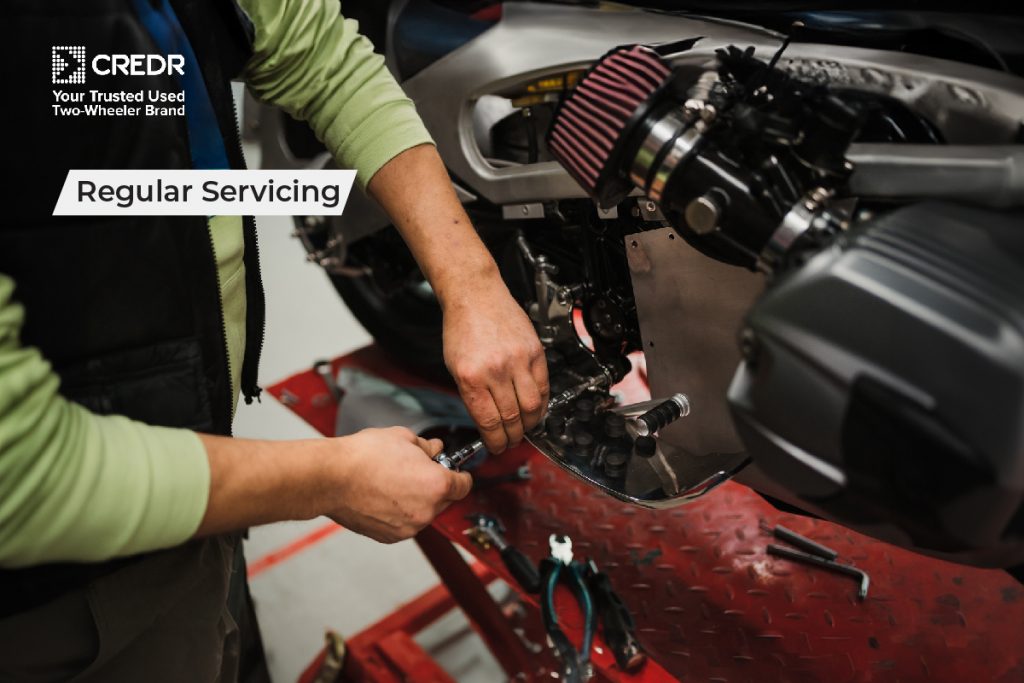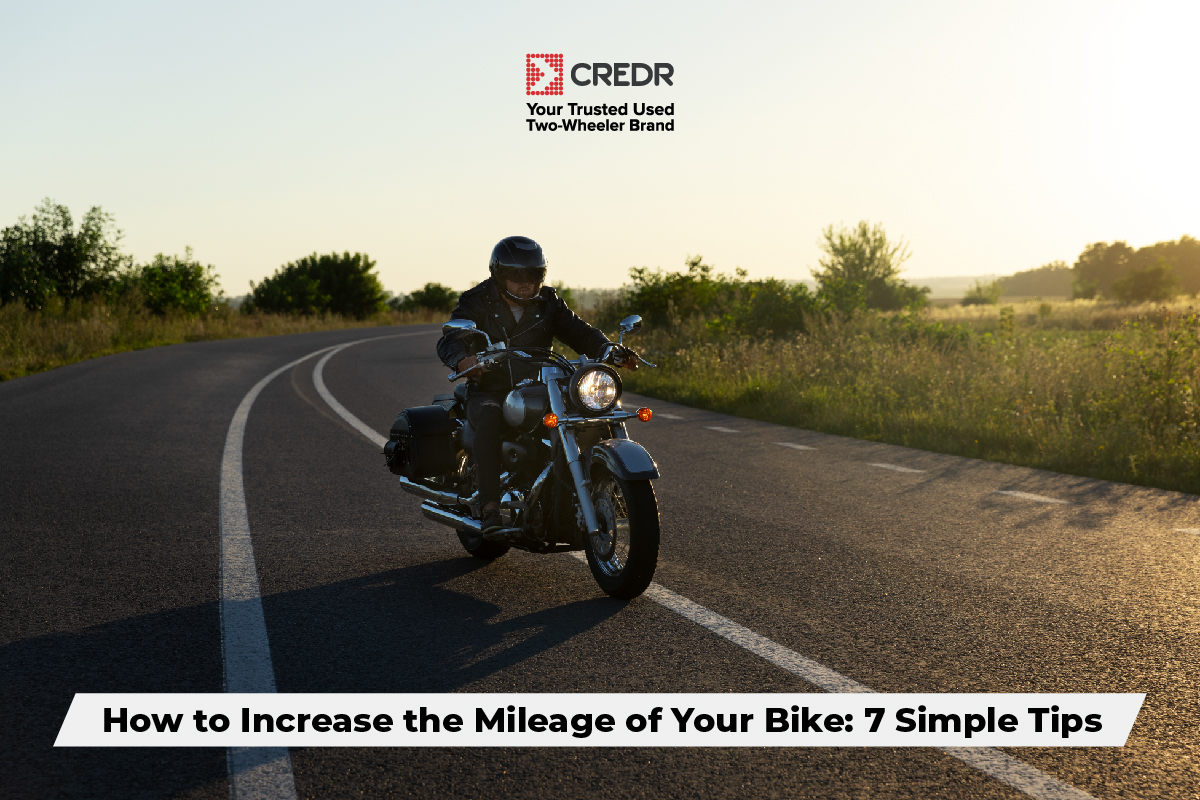A bike’s mileage is not only a vital performance indicator, but it also influences buying decisions. Whether you’re purchasing a pre-owned or a new two-wheeler, it’s significant to assess a bike’s fuel efficiency.
Determining a bike’s mileage helps to gauge the distance it can cover with a specific fuel amount. A bike with bad mileage will gradually lose its value, regardless of its appearance or cost. So, knowing how to increase the mileage of your bike allows you to enjoy weekend rides and cruise through ever-growing traffic with ease. It also increases its resale value.
Also, maintaining average bike mileage can improve the lifespan and performance of bikes, while allowing you to save fuel costs. If you’re wondering how to increase the mileage of old bike or discover why maintaining the mileage of a bike is a lucrative option, look no further.
Let’s take a closer look at a few practical tips on increasing bike mileage:
- Speed and Riding Style
The easiest way to improve a bike’s mileage is to drive it at a constant speed varying from 30kmph-50kmph. Riding your bike at steady speeds helps you maintain a high mileage at all times. Accelerate slowly after a standstill and shift gears at the right time to ensure your engine is operating efficiently. A sudden shift or riding at high speeds can damage the bike’s components and reduce mileage. Similarly, downshifting aggressively has a negative impact on the mileage.
- Air Pressure
Tyres establish a connection between the road and the bike. Keeping the tires inflated properly at all times minimizes their rolling resistance. This helps the bike to make the best out of every fuel drop consumed. It’s highly recommended for a rider to adhere to the tyre pressure mentioned by the manufacturer. However, avoid overinflating its rubber as it can negatively impact safety levels, grip, and handling. Additionally, avoid upsizing the tyres when it’s time to replace them. Although upsizing improves grip levels, it reduces mileage and impacts the handling features of the bike negatively.
- Well-lubricated Components
Lubricate the bike’s chain regularly, especially if you reside in places where there’s excessive dust, dirt, or sand. A well-lubricated chain transfers power to the bike’s rear wheel, without friction. It’s also vital to ensure other fluids such as the brake oil, cooling fluids, and engine oil are sufficient. Replace the fluids frequently. Besides, it’s vital to check the quality of the engine oil at recommended intervals. Bad engine oil has a negative impact on a bike’s overall performance and mileage. Visit an authorized service center to learn about the best engine oil and use it.
Also Read: Quick Tips to Keep Your Diesel Engine Healthy to Get the Best Mileage
- Cleanliness
If you wish to know how to increase scooty mileage, make sure to follow a few basic tips. Removing grime, dust, or other rubbish from your bike will allow it to move freely and smoothly. Riding a bike in wet conditions and allowing the mud to harden might lead to rust. Clean the dirt immediately as the clay can absorb the lubrication of exposed components. Consequently, this can increase friction and exert unnecessary pressure on the engine. Avoid driving the bike with clogged or dirty air filters. It reduces the bike’s efficiency and mileage.
- Proper Planning and Parking Etiquette
Planning your route also helps to improve bike mileage. Routes with frequent stoplights, severe inclines, and heavy traffic have an adverse effect on mileage.
Exposure to harsh or direct sunlight leads to the vaporization of the vehicle’s fuel and decreases the mileage. Park your two-wheeler in shaded areas for best results.
- Aerodynamics & Additional Weight
Carrying heavy stuff on your two-wheeler exerts excessive pressure on the engine. This leads to excessive fuel consumption. Carrying a passenger or aftermarket accessories reduces fuel efficiency. Panniers or heavy crash guards increase weight and alter the bike’s aerodynamics. Consequently, this compels the engine to use more fuel and work harder to resist air. Even essential modifications such as the inclusion of a waterproof board to reduce splashes in monsoon decrease mileage as it affects aerodynamics and increases the bike’s surface area.
- Regular Servicing and Fuel System Cleaning
Make sure to get the bike serviced at frequent intervals to improve bike mileage and its overall condition. It’s one of the best bike mileage tips as frequent service helps discover any engine issues or defects in any other bike components. Check if the spark plug is in a carbon-free and healthy state and receives an adequate amount of current. Consider using good quality fuel and including an additive as it helps to enhance engine performance and clean the system. Similarly, old bikes can benefit from regular carburetor cleaning.
Also Read: Top 10 Daily Commuter Bikes in India in 2024 – with Maximum Mileage & Extraordinary Performance

Why should you increase bike mileage?
Here’s a list of benefits you can enjoy by improving motorcycle mileage:
- Cost Effective: Maintaining good mileage helps to reduce costs in the long run. Bikes that cover more miles per liter use less fuel. This helps to save money spent at the petrol filling station. These savings can accumulate over the years, especially for riders who rely on their bikes to commute daily.
- Eco-friendly Approach: A better fuel efficiency indicates the bike is bound to release fewer emissions. Bikes with good mileage are known for their smaller carbon footprint and low contribution to air pollution.
- Improved Performance: A well-maintained bike delivers optimal performance. A bike that operates at a decent mileage is usually considered mechanically sound and well-tuned. Such bikes are known for reliable operation, smooth acceleration, and better handling.
- Longevity: Routine maintenance helps preserve mileage while extending the bike’s overall lifespan. Frequent checks help you to locate parts that are unduly stressed or wear out unevenly. It helps to avoid mechanical failures along with cost replacements or repairs that can arise due to negligence.
- Safety: The task of maintaining a bike’s mileage requires the rider to keep vital parts like brakes, engine, and tires in excellent condition. Well-maintained bikes decrease the chances of mechanical failures and risk of accidents.
Conclusion
The average motorcycle mileage ranges from 30-60 miles per gallon approximately. However, it varies according to the engine capacity and the bike model. Following a few proper maintenance tips, and riding habits, and understanding your bike’s mechanics makes improving your bike’s mileage easy. It ensures your bike is capable of delivering good fuel efficiency and performance.




